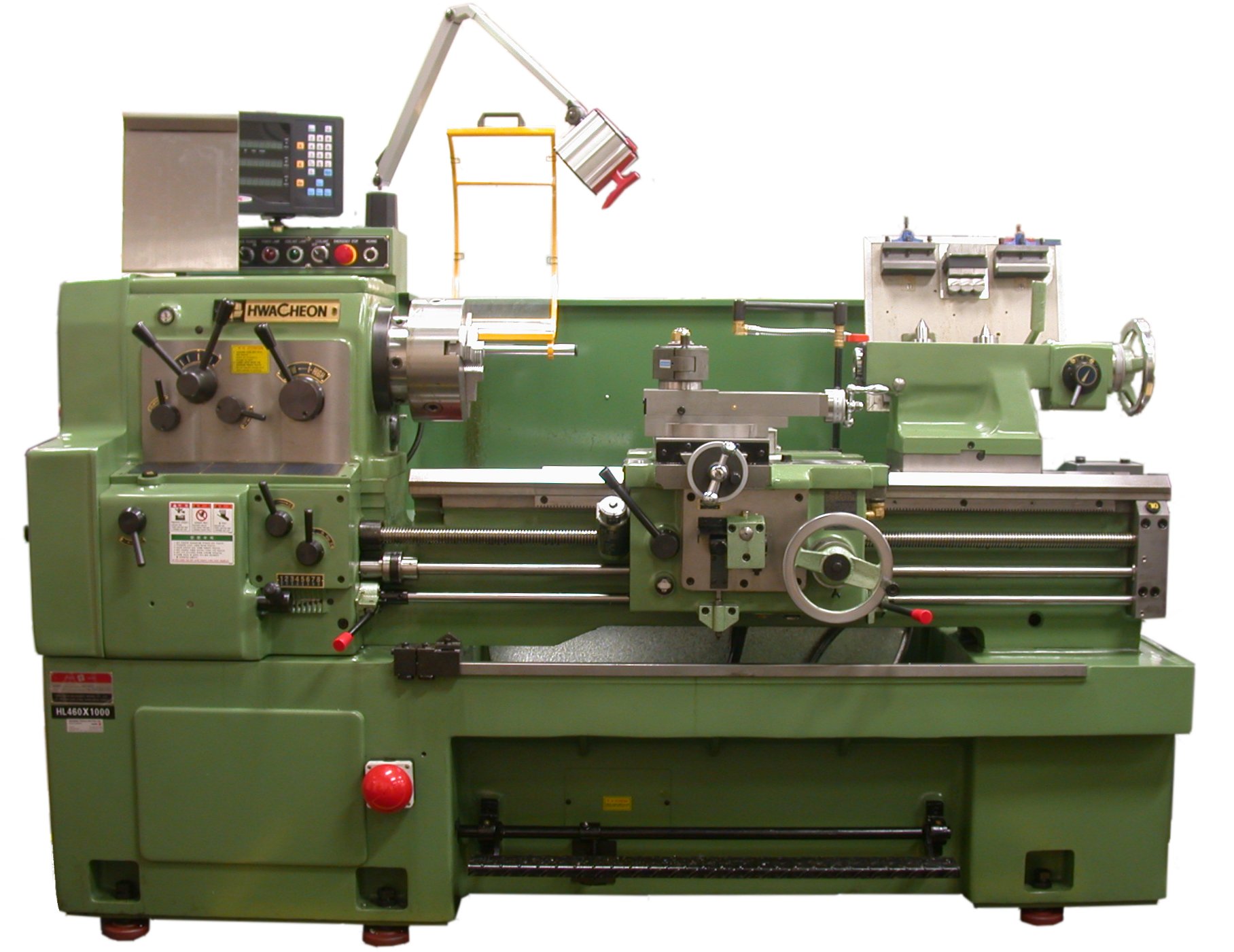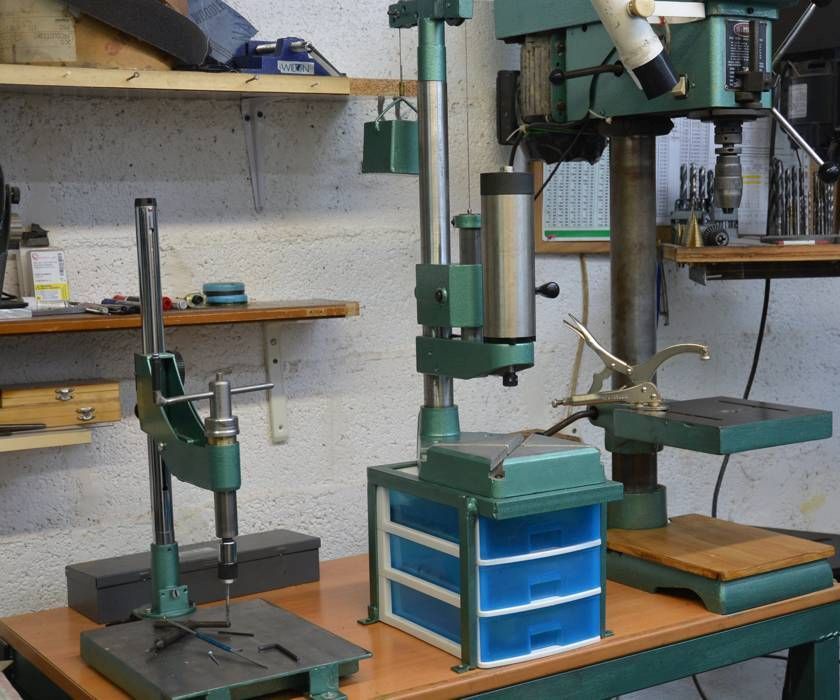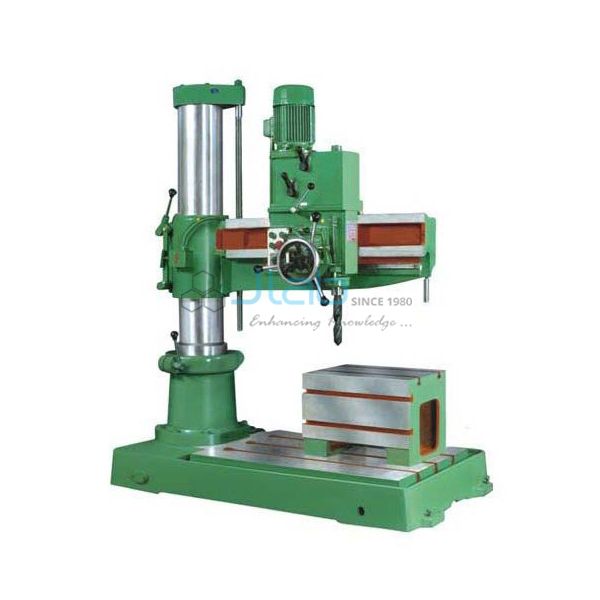Back to: BASIC TECHNOLOGY JSS2
Welcome to Class !!
We are eager to have you join us !!
In today’s Basic Technology class, We will be discussing Metal Work Machines. We hope you enjoy the class!

METALWORK MACHINES
Metalwork machines are tools used in working with metals to create individual parts, assemblies, or large-scale structures.
TYPES OF METALS WORK MACHINE AND THEIR FUNCTIONS
Metalworking has evolved from the discovery of smelting various ores, producing malleable and ductile metal useful for tools and machine makings. Modern metalworking processes specialize in forming, cutting or joining processes. Today’s machine shop includes a number of machine tools capable of creating a precise, useful workpiece.
LATHE
A lathe is a machine tool which spins a block or cylinder of material so that when abrasive, cutting or deformation tools are applied to the workpiece, it can be shaped to produce an object which has rotational symmetry about an axis of rotation. It can as well be defined as a machine tool that revolves a piece of work on its axis at a suitable speed, and by the use of a suitable cutting tool on the revolving work, and a component of a circular cross-section is produced.

The main parts of a lathe
- Headstock
- Spindle
- Bed
- Carriage
- Apron
- Lead screw
- Tailstock
- Cross slide
- Compound slide
- Toolpost
- Feed shaft
- Chucks
Examples of objects that can be produced on a lathe
- Candlestick holder
- Table legs
- Bow
- Baseball bats
- Crankshafts of engines
- Camshaft
- Bearing mounts
TURNING OPERATIONS ON THE LATHE MACHINE
- Facing or surfacing: it is an operation of producing a flat surface on a metal bar and is carried out by moving the cutting tool perpendicular to the axis of the rotating workpiece.
- Sliding: it is an operation of producing a cylinder surface and is carried out by moving the cutting tool parallel to the axis of the rotation.
- Parting off: it is an operation of cutting off the finisher component from the remaining part of the bar length and is carried out by moving a parting – off tool perpendicular to the axis of rotation.
- Drilling on the lathe: drilling operation is performed on the lathe machine by feeding the drill held in the tailstock into the rotating workpiece. Before the drilling operation can commence, the end of the workpiece must be faced and centre drilled with a combination centre drill.
- Boring: it is an operation of enlarging the diameter of an already drilled hole with a single cutting tool held in the tool post.
- Thread cutting: when the job is required to be screw cut on the lathe, the work is turned to the top or major diameter of the thread. After this, the correct gears selected with the screw cutting tool must be clamped in the tool post. The screw-cutting tool must now be set squarely and to centre by using the screw-cutting gauge to start the machine with low speed and engage the lead screw nut on the correct line of threading dial. Then, the carriage hence the tool moves along, making a fine spiral cut on the work.
- Taper turning: There are four ways of producing a tapered surface in the centre lathe machine
- By swivelling the compound slide
- By offsetting the tailstock
- By using taper turning attachment
- By using a form tool.
DRILLING MACHINE
A drilling machine is a machine tool that holds the cutting tool (drill) perpendicular to the workpiece on the worktable and includes provision for rotating the cutting tool and feeding it into work and thereby originating a round hold.
TYPES OF DRILLING MACHINE
- Sensitive drilling machine
- Pillar drilling machine
- Radial drilling machine
SENSITIVE DRILLING MACHINE

This is a light and high-speed machine used for drilling small holes up to 12mm diameter. The power is transmitted to the machine spindle by a vee-belt drive from the electric motor mounted on the machine.
PILLAR DRILLING MACHINE
This is similar in principle to the sensitive types but more robust than sensitive type. The machine is used for drilling holes up to about 40mm diameter. Its spindle has a tapered hole to accommodate taper shank drills. An all geared head is incorporated on the machine to provide a range of speeds.
RADIAL DRILLING MACHINE

This machine comprises a cast iron base with heavy steel column situated vertically at one end. The column supports an arm upon which a carriage carrying the drill spindle and feed arrangement is mounted.
Radial drilling machines are provided with several spindle speeds and automatic feeds. The machine can accommodate heavy-duty work.
CUTTING TOOLS
There are various tools required when performing drilling operation, among them are the drill and the holding tools. Others are clamp dog, parallel jaws, swivel base, taper shank adaptor, square head screw, headless (safety) screw, chuck key, drill chuck drift, chuck arbour, three-jaw chuck (for small drill) etc. the drills are twist drill, combination drill, reamer, countersunk, counterbore cutter, spot face cutter, trepanning tool, tap etc.
SAWING MACHINE
A power sawing machine is used to cut soft materials with coarse tooth ensures that the metal chips do not clog the teeth. There are many brands of the hacksawing machine, but a good one is a type incorporated with a relief of pressure on return stroke by oil pump or by adjustable oil dashpot in conjunction with the angular setting of the slide.
CUTTING FLUIDS
These are called coolants or cutting lubricants used to
- Cool work and tools and to lessen distortion
- Lubricant inured to reduce power consumption
- Prevent welding of chips to tool
- Wash away chips and swarf.
- Improve surface finish
- Protect tools against corrosion
Types of coolants
- Soluble oil
- Straight oil.
- Water-based fluids
BOLTS AND NUTS
These are used for joining parts which may, at a later date have to be taken apart for the purpose of repair or replacement. They are also used where nut can be easily turned or held by a spanner.
SET SCREW
These are used for the same purpose as bolt and nut but mainly used where the nut is inaccessible. That is where the design of some component parts allows no room for a nut. Types of set-screw are countersunk, cheese, hexagonal, socket and round head screw.
STUDS
These are metal rods having threads on its both ends leaving an untreated small portion in between. The studs are mostly used for joining, parts to grey cast iron body or aluminium castings only.
PIN
It is a short thin piece of metal used for fastening two or more component parts together. Pins are made of cold drawn carbon steel and they are usually installed by pressing them into position. The most commonly used pins are dowel pins, straight pins, taper pins and spring pins.
CARE AND MAINTENANCE OF METALWORK MACHINES
- Check the lubrication
- Sharpen important component
- Check alignment specifications
- Inspect the cleanliness
- Take good care of accessories and parts.
We have come to the end of this class. We do hope you enjoyed the class?
Should you have any further question, feel free to ask in the comment section below and trust us to respond as soon as possible.
In our next class, we will be talking about Friction. We are very much eager to meet you there.

Helping
obioma yes it makes work easier.
I don’t get what I need…..
Don’t worry
You guys are the best, you just saved my ass here .
The is too much…….